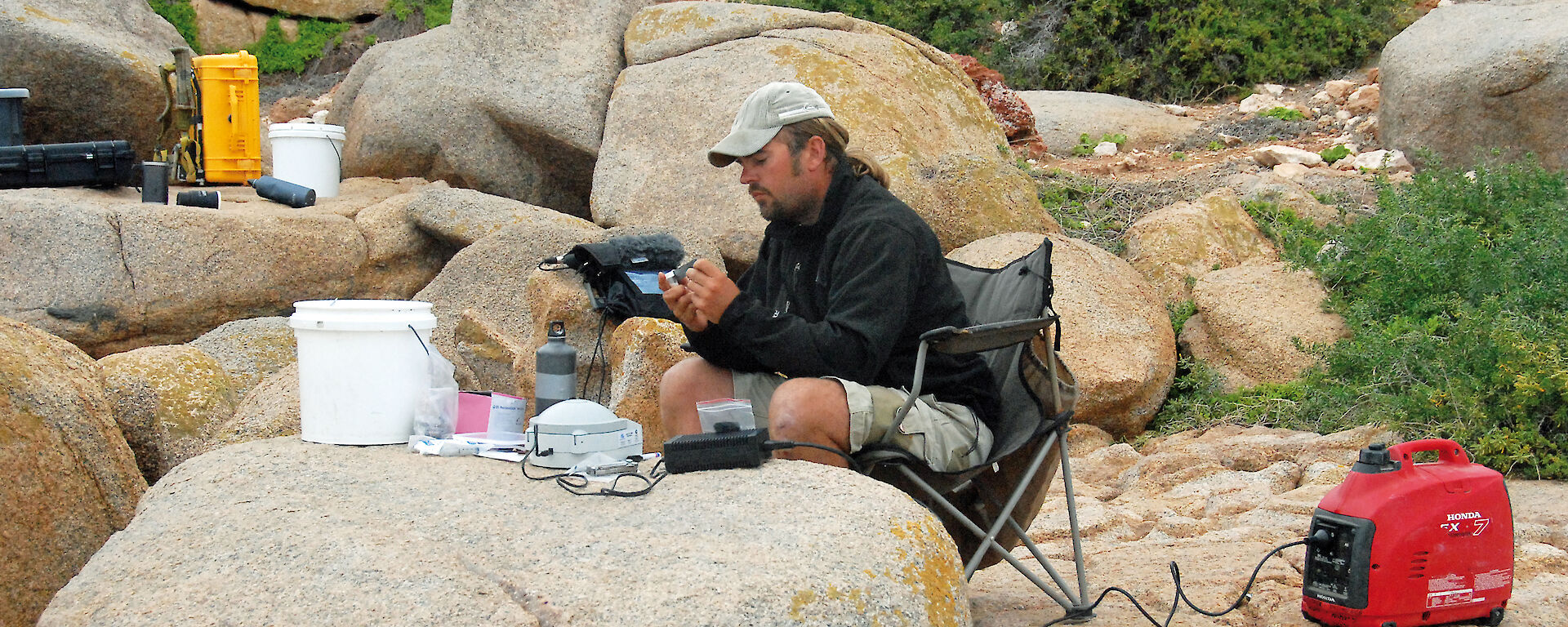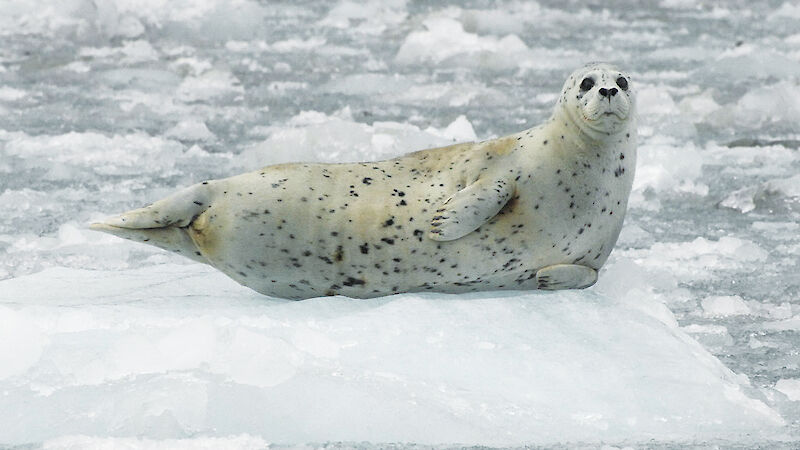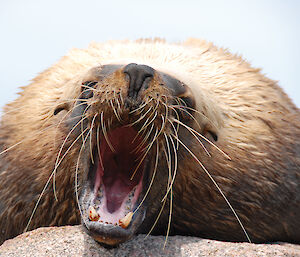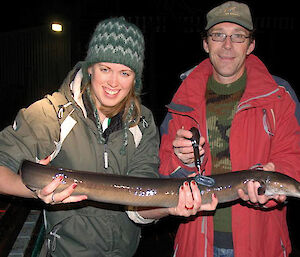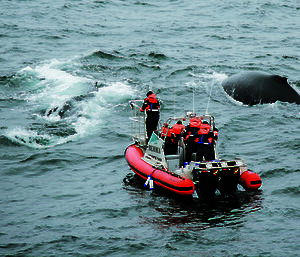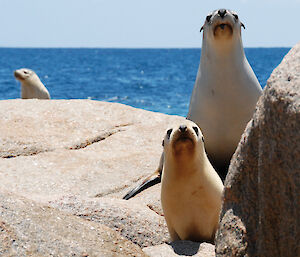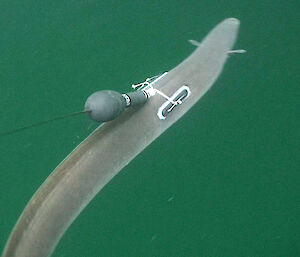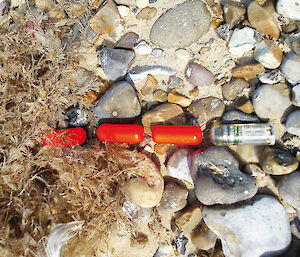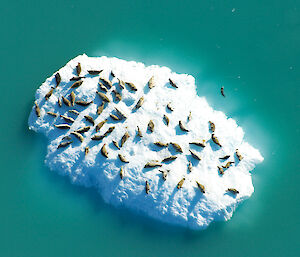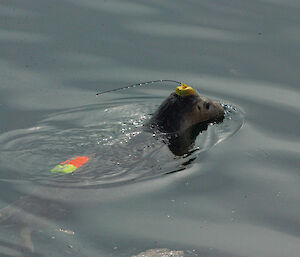Electronic recording devices attached to marine creatures like whales, seals, seabirds and fish, are providing scientists with a fascinating glimpse into life in the marine realm and information that will help manage and protect the animals and their ecosystems.
In March an international contingent of marine scientists met in Hobart to discuss the science and technology of ‘bio-logging’ – the collection and analysis of data using animal-borne instruments (or tags) to understand the animals’ behaviour, physiology and ecology. The Fourth International Science Symposium on Bio-logging also attracted industry groups involved in the development of the electronic bio-logging tags.
Australian Antarctic Division whale researcher, Dr Nick Gales, said bio-logging tags play an important role in Antarctic and subantarctic research on flying seabirds, penguins, seals and whales.
‘There is a huge range of tags available, depending on the species you are studying and the information you want to collect,’ he said.
‘The tags either transmit their data to your computer via satellite, or store it in an internal memory where it can be extracted once the tag is retrieved. They can be attached internally or externally and can record a vast range of parameters, including sea water properties, depth, speed, location, temperature, light and tilt.’
The tags effectively provide a diary of the animal’s activities and its environment over minutes, months or years. But the vast amount of data that can be collected means researchers now face the challenge of how to analyse, interpret and use it.
Australian Antarctic Division seabird ecologist, Dr Graham Robertson, has used bio-logging tags to study albatross and petrel species at risk of becoming bycatch in longline fisheries. Now he uses the technology to develop seabird-saving devices for the fishing industry.
‘I use time-depth recorders to study the sink rates of demersal (sea floor) and pelagic (open ocean) longlines and to design experiments that test the effects of gear modifications on the sinking of these lines,’ he said.
The research has enabled Dr Robertson to develop an award-winning ‘Underwater Bait Setter’, which deploys baited hooks six metres under water where the seabirds can’t get them. The work is contributing directly to the conservation of seabirds through changes in fishing practices and policies.
The following stories provide a taste of some of the research discussed at the bio-logging conference and the variety of ways bio-logging devices can be used.
Foraging behaviour of Australian sea lions
The foraging behaviour of critically endangered Australian sea lions (Neophoca cinerea) has been investigated using a combination of fine scale bio-logging data of individual’s movements and biogeochemical analysis of whiskers.
University of Adelaide PhD student, Andrew Lowther, tracked 20 adult females from seven colonies for up to nine months, in their South Australian range between Pages Island in the east and Lilliput, Olive and Blefuscu islands in the west.
He found that individuals consistently visited the same foraging areas but there were significant differences in where different adults foraged – with some preferring deeper waters and others remaining in very shallow coastal waters.
‘Individual adult females seem to have specific areas and food items they prefer, returning again and again to the same reef or seagrass bed regardless of the season,’ Mr Lowther said.
To confirm that this behaviour wasn’t an artefact caused by limitations in the study design he examined the stable carbon (δ13C) and nitrogen (δ14N) isotope ratios recorded in the whiskers of each animal. These isotopes (different molecular forms of an element) reflect the carbon and nitrogen signatures of the prey the sea lions consume and vary depending on the type of prey consumed and the prey’s environment. Each whisker provided up to two years of historical foraging data.
The biogeochemical analysis confirmed the tracking data; the foraging behaviour of individuals was stable over time, and there was variation between seals foraging in the same ‘ecotype’ (inshore or offshore).
Mr Lowther says that variation in the way individual animals use their environment will give an indication of their ‘evolutionary potential’ – whether, at a population level, they could survive climate-driven changes to their habitat. But an understanding of how adaptable Australian sea lions are to change requires an understanding of colony or population behaviour, rather than a small sub-set of animals.
To gain this understanding, Mr Lowther took whisker samples from up to 60% of pups in each breeding colony. As pups feed on their mother’s milk, the isotope ratios in their whiskers can be used to infer the ratios in their mothers and therefore the foraging location of the mothers. The analysis showed a more complex and detailed set of foraging behaviours than tracking alone. Two groups of sea lions demonstrated stable inshore or offshore foraging patterns while a third group remained inshore but fed on the same prey as offshore foragers.
‘Determining where and on what animals feed gives conservation managers a clearer picture of how to best protect this uniquely Australian species of sea lion,’ Mr Lowther said.
This research was supported by the Australian Marine Mammal Centre at the Australian Antarctic Division.
Tracking European eels to the Sargasso Sea
European eels (Anguilla anguilla) are a scientific enigma. No-one knows exactly where they spawn and spend their early lives and no-one has ever caught an adult eel in the open sea. Scientists have, however, been able to approximate where their spawning grounds must be based on the size of juvenile eels captured in the waters between Europe and the east coast of North America.
From this, scientists know the eels undertake a 5000km spawning migration from Europe to the Sargasso Sea. During this time they develop from adolescence to sexual maturity, under conditions of starvation and extreme exertion.
Eel stocks fluctuate naturally, but stocks across Europe have declined by 95% in the last 30 years and the causes are uncertain. The conditions that eels experience during their migration, the threats they face and the types of behaviours that they exhibit are therefore of direct interest to those who want to conserve this species. However, the difficulties related to tracking eels in the Atlantic Ocean have driven many scientists to distraction.
In 2007, Microwave Telemetry produced a pop-up satellite archival tag (the ‘X tag’), which was small enough to fit large female eels (about 90cm in size). Using the X-tag externally, and internal archival tags, a team of scientists from the Centre for Environment, Fisheries and Aquaculture Science in the UK, and other European research institutions, began tracking 40 large female eels. The eels were tracked over five months and more than 2000 km from their release off the coasts of Ireland, Sweden and France.
The eels migrated towards the Sargasso Sea at speeds of 5–25 km per day. During their oceanic migration the eels adopted a diurnal (day/night) vertical migration pattern, ascending rapidly into shallow water (about 200 m) at dusk and returning rapidly into deep water (up to 1200 m) at dawn. Due to the large depth change at dawn and dusk, eels experienced a temperature gradient of up to 5°C twice per day and a pressure change of up to 100 bar. Across the sampled population, geographic migration was observed between 1.5°C and 12°C.
The scientists say that while there are still many questions, the tags have been highly effective at providing some of the first detailed insights into eel behaviour. More information is expected when the eels die (after spawning) and their internal archival tags are washed up on beaches, where they will be retrieved.
More information: Eeliad project
Tracking harbor seals in Alaska
Harbor seal numbers in Glacier Bay National Park, Alaska, declined by up to 11.5% per year between 1992 and 2008. There are many hypotheses to explain this decline but recent research led by Oregon State University PhD student, Jamie Womble, suggests that the diving and foraging behaviour of seals may be influenced by prey availability in the different habitats used by seals.
To find out, Ms Womble and colleagues from the National Park Service and the Alaska Department of Fish and Game attached bio-logging tags (time-depth recorders and VHF tags) to two groups of seals in the park; seals that used terrestrial sites as haulouts and seals that used glacial ice sites. Ms Womble tracked the seals during the breeding season (May and June) when the seals’ movements were more restricted.
Twenty five juvenile and adult female harbor seals were tagged for an average of 56 days to see where they dived, how deep and how long they dived, and to quantify the duration of their foraging trips. Prey (fish) availability was also assessed using hydroacoustic surveys (using sound to detect the presence of fish in the water) in each habitat.
Ms Womble identified four behavioural dive groups. The first two groups, made up primarily of terrestrial seals, foraged in relatively shallow areas with 90% of their dives occurring in the upper 50 m of water. In the third and fourth behavioural dive groups, comprised of glacial ice seals and three terrestrial seals, approximately 70% of dives occurred in the upper 50 m, while some seals occasionally dived to between 200 and 300 m. As well as diving deeper, seals from the glacial ice site had longer foraging trip durations.
The hydroacoustic work showed that the relative density of prey was consistently higher adjacent to the terrestrial haulout site than at the glacial ice site. Near the terrestrial site, most prey occurred in shallower depths, between 10 and 90 m. At the glacial ice site the prey density was consistently lower and prey occurred at a greater range of depths – extending up to 340 m.
These results suggest that harbor seals employ different foraging and diving strategies in different oceanographic zones of Glacier Bay. The biomass of fish and the depth they occur at may also influence the diving behaviour and foraging strategies of seals in different habitats.
‘Seals using the glacial ice site may be working harder to obtain prey,’ Ms Womble said.
‘This could potentially be a problem for young animals that may have more limited diving capabilities than adults. If they can’t forage at deeper depths they may have to travel greater distances to areas of higher prey availability.’
Travelling greater distances to forage may also come at a cost. Increased travel distances could result in increased risk of predation by killer whales, Steller sea lions, or sleeper sharks. It could also have a higher energy cost for adult females, which could limit their ability to feed young pups.

